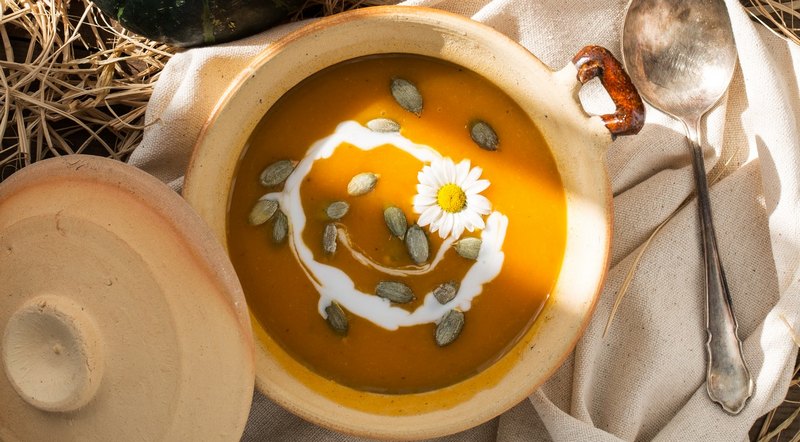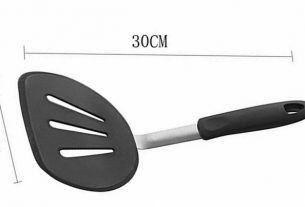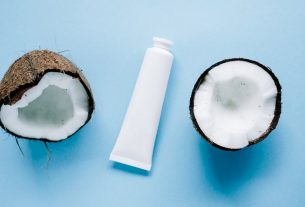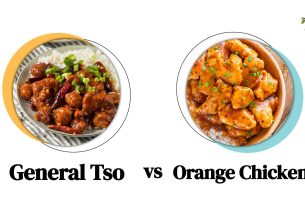There are differences between pumpkin and butternut squash, they both have different sizes and shapes as well as slightly different availability schedules. Each of their nutritional profiles is unique. They are sometimes cooked as well as eaten similarly, however, some recipes are found specific to a particular squash or another. What we will check out in this guide is to find out the differences between pumpkin and butternut squash.
What Is Squash?
A lot of people think squash is a vegetable. Nutritionally, you can say they have a lot of similarities with a series of vegetables, but pumpkins and butternut squash are fruits technically because both of them have seeds within them. Pumpkin is most times assumed to be a gourd instead of a squash possibly as a result of the skin which is slightly harder than an average squash.
However, a gourd is regarded as a fruit and it not usually edible because it is bitter and that makes it obvious that it is not pumpkins. Some other people relate pumpkins to melon and it is right that pumpkin is a melon and butternut squash is also a melon. Cucurbitaceae, the melon family includes squashes, gourds, and fruits casually referred to as a melon such as honeydew and others.
Difference Between Pumpkin and Squash Leaves
A lot of people do not know that squash leaves can be eaten. They are tasty and also highly nutritious. When you consider leafy greens, surprisingly, both pumpkin and butternut squash leaves are sweet and they usually do not have the bitterness associated with their large leaves (talk of collard greens). Leaves of butternut squash are dark green, heart-shaped and large. It is better to eat the smaller younger leaves because as they get older, they become tougher.
It is best when you add butternut squash to your stir-fry instead of a salad or when you steam them because their raw leaves could be a bit rough. Pumpkin leaves are popular across many cultures around the globe but they are ignored in large North American dishes.
Pumpkin leaves can be chopped up and cooked like almost all leafy greens when you harvested the leaves young. If you have collected them old, you will need to pull their stringy fibers out as much as possible before you stir-fry or steam them. It is easier to do than it looks, just try it out.
Pumpkin vs Butternut Squash– Availability
This depends on your location across the globe, pumpkin is referred to as nearly all winter squash in Australia and roundish large orange squash carved each year into Jack-o-Lanterns. Pumpkins are always almost harvested exclusively in September and October even though they can last for a while. You are likely to also see them in local stores in November. Imported pumpkins could also be occasionally found but to be straight, the season is usually very limited.
Both pumpkin and butternut squash are considered to be winter squash, however, butternut squash can be found available all year-round. Butternut squash is usually more nutritious and sweeter during the winter mainly because local farmers harvest them instead of being grown in a greenhouse environment that is less natural or shipped from very far away.
The interesting thing is that summer and winter squash can be determined on the basis of the skin’s toughness. Usually, winter squash is harvested very late in the year where it would have developed a hard, thick skin. A summer squash such as zucchini is usually harvested early in the year with their skins soft and edible.
Pumpkin vs Butternut Squash: Nutrition
Whenever edible foods have some similarities in appearance, you could easily guess that their nutritional components will be similar. Both butternut squash and pumpkin are orange vegetables and they have very high beta carotene content. They have various variations as shown in this chart below:
| Per 100 grams of Raw | Pumpkin | Butternut Squash | ||
| Calories | 26 | 45 | ||
| Grams (g) | Daily Value (DV) | Grams (g) | Daily Value (DV) | |
| Carbohydrates | 6.5 | 11.7 | ||
| Sugar | 1.4 | 2.2 | ||
| Fiber | 0.5 | 2 | ||
| Fat | 0.1 | 0.1 | ||
| Protein | 1 | 1 | ||
| Potassium | 10% | 10% | ||
| Iron | 4% | 4% | ||
| Vitamin A | 148% | 213% | ||
| Vitamin C | 15% | 35% | ||
| Vitamin E | 5% | 7% | ||
| Calcium | 2% | 5% |
Another interesting factor you should consider that is not highlighted in this graph above will be the ratio of the Omega 3 fatty acids to that of Omega 6. You can find 16mg Omega 6 and 26mg Omega 3 in a 100gram serving of your butternut squash. In pumpkin of 100gram serving, you will only find 2mg Omega 6 and 3mg Omega 3.
When you consider nutrition, butternut squash will be best if you want the most types of vitamins to be added to your meal. If, however, you want to minimize carbs and calories, go with pumpkin.
Cooking with Butternut Squash and Pumpkin
The most important thing to know if you have never used a pumpkin in cooking before is to ensure you purchase the correct pumpkin. There are pumpkins called carving pumpkins which usually come out during Halloween, they are made particularly for carving. Pie pumpkins, miniature pumpkin and sugar pumpkins, are made particularly for eating.
You will find it easier to select butternut squash because they can all be eaten. However, the best is too heavy for the size, you should compare them when you are trying to purchase them.

How to Cook Pumpkin or Butternut Squash
You have two choices you can use to cook winter squashes because they are known to have hard exteriors.
- Use your muscle with a very sharp knife to cut them in quarters or half before you cook. Ensure you are careful so that the knife will not slip.
- Cook them whole and then cut them once the buttery is soft.
We suggest that you should cook them whole. The best method to cook your butternut squash and pumpkin (reasonably sized) is by roasting them in an oven, quick-cooking inside a microwave or slow-cooking inside a crockpot.
Roasted Whole Pumpkin or Butternut Squash
Roasting pumpkin or butternut squash will save you so much trouble instead of preparing them raw. However, you will have to sacrifice some of their caramelized flavors. The sacrifice is worth it though there is a way to solve that. Allow the oven to preheat to a temperature of 425°F (that will be 375°F for pumpkin), then use a knife or fork to poke a series of holes inside the squash to allow the steam to let out which helps the process of cooking.
Get a very big baking dish big enough to contain the entire squash and use your aluminum foil to line it so that cleaning up will be easy. Allow it to bake for about an hour and you could give an additional 15 minutes in case the squash is very large. If you want burnt butter, caramelized flavor, bake the squash for about 50 minutes, remove it from your oven and then cut it in quarters, half, or into rounds. You should then coat the upper area of each of them lightly with additional virgin olive oil by using a basting brush and then return it for an extra 10 to 15 minutes.
How to cook butternut squash or pumpkin inside the microwave:
- Get a very big microwavable dish that is big enough to help accommodate the squash.
- Poke a series of holes on the exterior of the squash
- Put it inside your microwave for about 15 minutes.
- In case it is still a bit too hard, add an extra 5 minutes. The main cook time varies with size.
- There are likely to be some whistles or pops as it cooks and this indicates air escaping the squash and this is the reason for poking the holes.
How to Slow Cook Whole Pumpkin or Butternut Squash
You only need a crockpot large enough for your squash if you want to slow cook the squash whole. There is no need for water. Put the squash or pumpkin in the slow cooker and put the settings to low. Allow it to cook for about 6 to 8 hours. You will notice that it falls in upon itself a little and that’s fine completely. It means the exterior is already soft enough and can be sliced easily. Scoop the seeds out and serve it the way you like.
Most Popular Butternut Squash and Pumpkin Recipes
People know pumpkin for two main things, pie and carving it at Halloween. An amazing dessert that has been changed to its spice is pumpkin pie. Butternut squash does not have a meal that is quite popular. However, it is usually used in creamy soups, stews, and curry dishes.
Related Questions
Let us check out some related questions frequently asked:
Starchy vegetables to avoid for weight loss?
Almost all whole vegetables contain nutrition that helps in weight loss, specifically fibers and this also includes some starchy vegetables. Whenever you process or douse a vegetable with extras such as salty, sugary sauces, butter, and oil, you will lose a lot of benefits and then gain a series of disadvantages.
For calories, you should eat a lot of starchy vegetables such as carrots, corn, potatoes, beans, and in moderation; beets because of more carbohydrates than fiber. Avoid completely any vegetables that have been processed highly disguising as healthy foods like vegetable straws and French fries.


